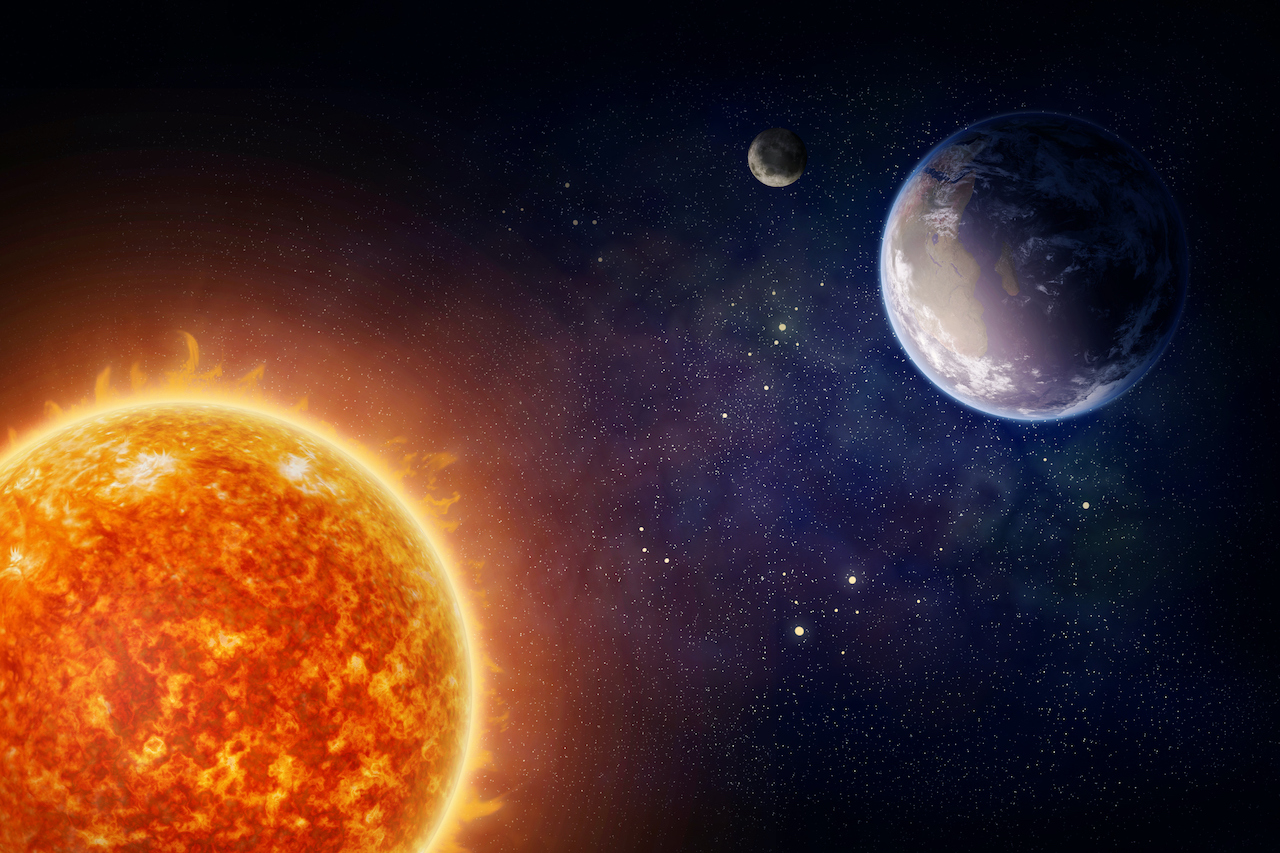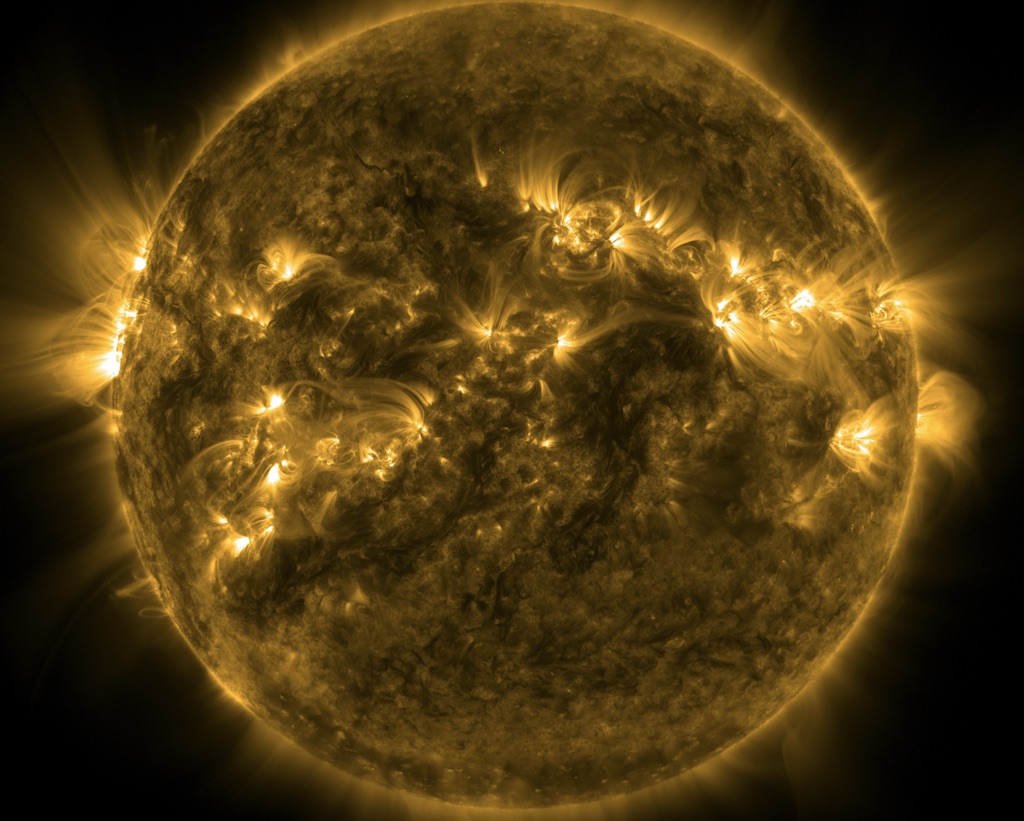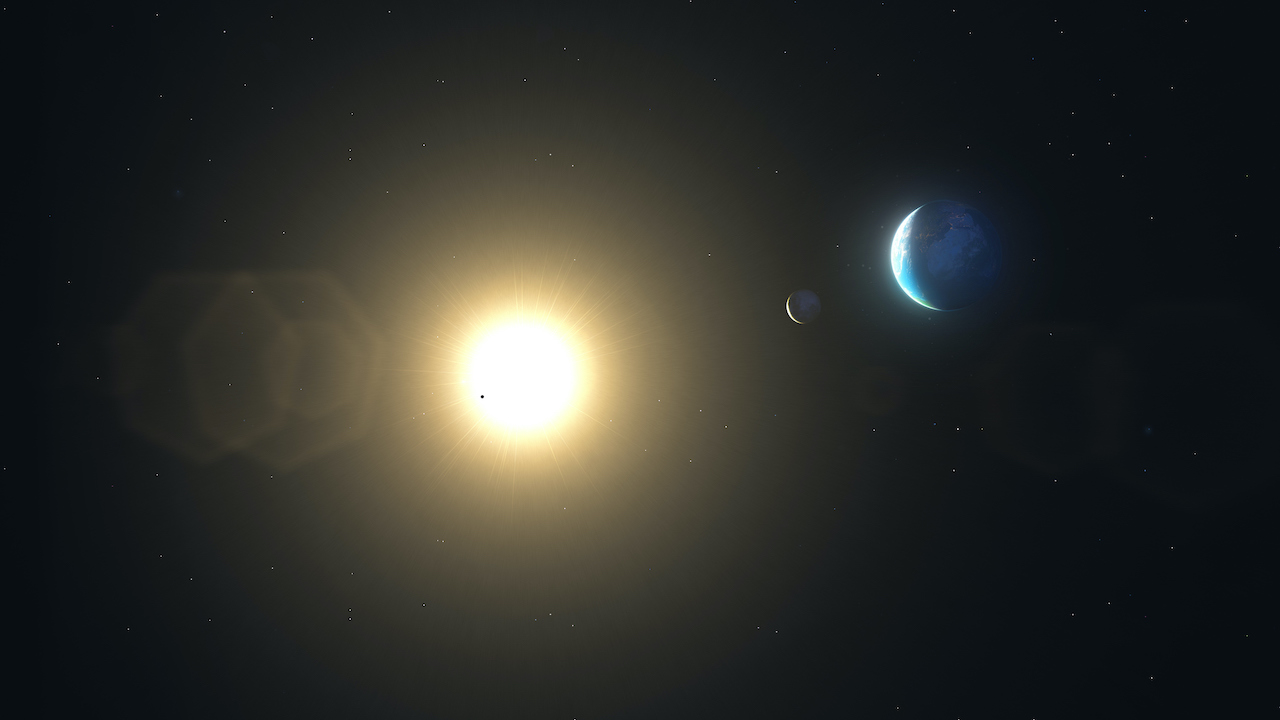How big is the sun?
The sun is our solar system's most massive object, but what size is it?

It is the largest object in the solar system, but how big is the sun when compared to the rest of the stars in the Milky Way galaxy? The sun is classified as medium-sized among these hundreds of billions of stars.
Radius, diameter and circumference
The sun is nearly a perfect sphere. Its equatorial diameter and its polar diameter differ by only 6.2 miles (10 km). The mean radius of the sun is 432,450 miles (696,000 kilometers), which makes its diameter about 864,938 miles (1.392 million km). You could line up 109 Earths across the face of the sun, according to NASA. The sun's circumference is about 2,715,396 miles (4,370,006 km).
It may be the biggest thing in this neighborhood, but the sun is just average compared to other stars. Betelgeuse, a red giant, is about 700 times bigger than the sun and about 14,000 times brighter.
"We have found stars that are 100 times bigger in diameter than our sun. Truly those stars are enormous," NASA says on its SpacePlace website. "We have also seen stars that are just a tenth the size of our sun."
According to NASA's solar scientist C. Alex Young, if the sun were hollow, it would take about one million Earths to fill it.
It's possible that the sun is even larger than previously thought. Xavier Jubier, an engineer and solar eclipse researcher, creates detailed models of solar and lunar eclipses to determine precisely where the moon's shadow would fall during the solar eclipse. But when he matched actual photos and historical observations with the models, he found precise eclipse shapes only made sense if he scaled up the sun's radius by a few hundred kilometers.
Even missions like NASA's Solar Dynamics Observatory (SDO) and measurements of the inner planets across the face of the sun don't refine the star's radius as precisely as desired.
Breaking space news, the latest updates on rocket launches, skywatching events and more!

"It's harder than you think just to put a ruler on these images and figure out how big the sun is — [SDO] doesn't have enough precision to nail this down," NASA researcher Ernie Wright told Space.com. "Similarly, with the Mercury and Venus transits, it turns out [a measurement based on those is] not quite as precise as you'd like it to be."
Wright said different papers using a variety of methods have produced results that differ by as much as 930 miles (1,500 km). That could be a problem if you are planning to skirt the edges of the next solar eclipse.
"For most people, yes, it doesn't really matter; it won't change everything," Jubier said. "But the closer you get to the edge of the [eclipse] path, the more risk you take."
Mass and volume
The total volume of the sun is 1.4 x 1027cubic meters. About 1.3 million Earths could fit inside the sun, according to NASA's statistics. The mass of the sun is 1.989 x 1030 kilograms, about 333,000 times the mass of the Earth. The sun contains 99.8 percent of the mass of the entire solar system, leading astronomers Imke de Pater and Jack J. Lissauer, authors of the textbook Planetary Sciences, to refer to the solar system as "the sun plus some debris".
But the sun's weight isn't constant. Over time, the solar wind has carried particles, and thus mass, away from the star. According to astronomer Phil Plait, the sun loses an average 1.5 million tons of material every second to the solar wind.
Meanwhile, in the heart of the star, mass is converted into energy. The powerhouse of the star converts more than 4 million tons of solar material into energy every second, Plait said.
Altogether, Plait estimated that the sun has lost a total of 1024tons of material over its 4.5-billion-year lifetime, or more than 100 times the mass of the Earth. While that sounds like a lot, it's only about 0.05 percent of the star's total mass.
Yellow dwarf

The sun is classified as a G-type main-sequence star, or G dwarf star, or more imprecisely, a yellow dwarf. Actually, the sun — like other G-type stars — is white, but appears yellow through Earth's atmosphere.
Stars generally get bigger as they grow older. In about 5 billion years, scientists think the sun will start to use up all of the hydrogen at its center, according to NASA. The sun will puff up into a red giant and expand past the orbit of the inner planets, including Earth. The sun's helium will get hot enough to burn into carbon, and the carbon will combine with the helium to form oxygen. These elements will collect in the center of the sun.
Later, the sun will shed its outer layers, forming a planetary nebula and leaving behind a dead core of mostly carbon and oxygen — a very dense and hot white dwarf star, about the size of the Earth.
While the sun is typical in most respects, it does have one quality that stands out from the majority of stars — it is a loner. Most stars have a companion, with some part of a triple or even a quadruple system.
But it may not have always been a solo star. Research suggests that all stars may have started out with a companion. The sun's companion may have been a wide binary, putting it as much as 17 times farther from the sun than Neptune and making it easier to be stripped away.
“The idea that many stars form with a companion has been suggested before, but the question is: how many?” the study's first author Sarah Sadavoy, a NASA Hubble fellow at the Smithsonian Astrophysical Observatory, said. “Based on our simple model, we say that nearly all stars form with a companion.”
Additional resources
For more facts about the sun, read NASA's overview: 10 Need-to-Know Things About the Sun. Additionally you can check out their Sun Fact Sheet for more statistics.
Bibliography
De Pater, Imke, and Jack J. Lissauer. Planetary sciences. Cambridge University Press (2015). https://books.google.co.uk
Embedded binaries and their dense cores. Monthly Notices of the Royal Astronomical Society, Volume 469, Issue 4 (2017). https://academic.oup.com/mnras/article/469/4/3881/3795556

